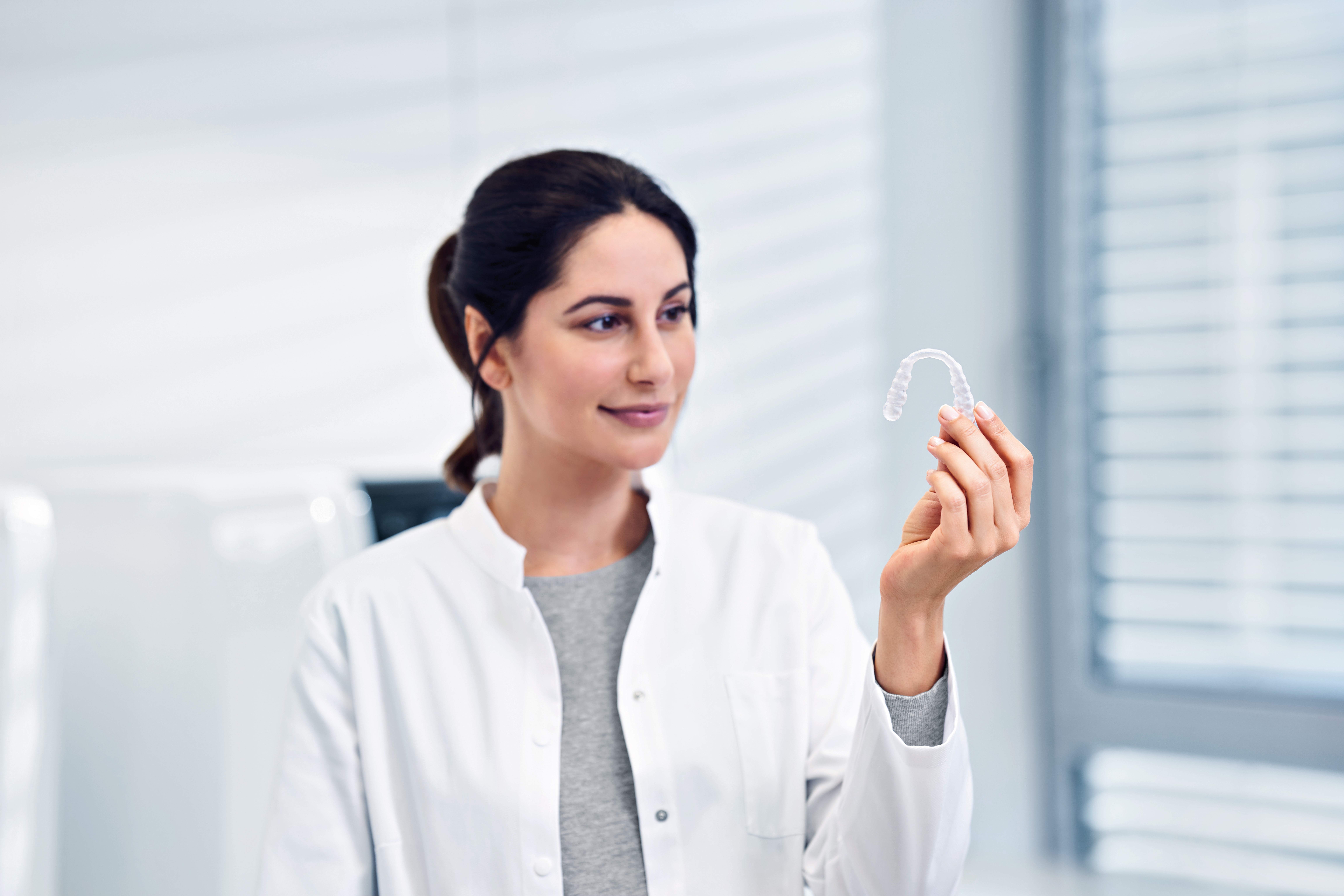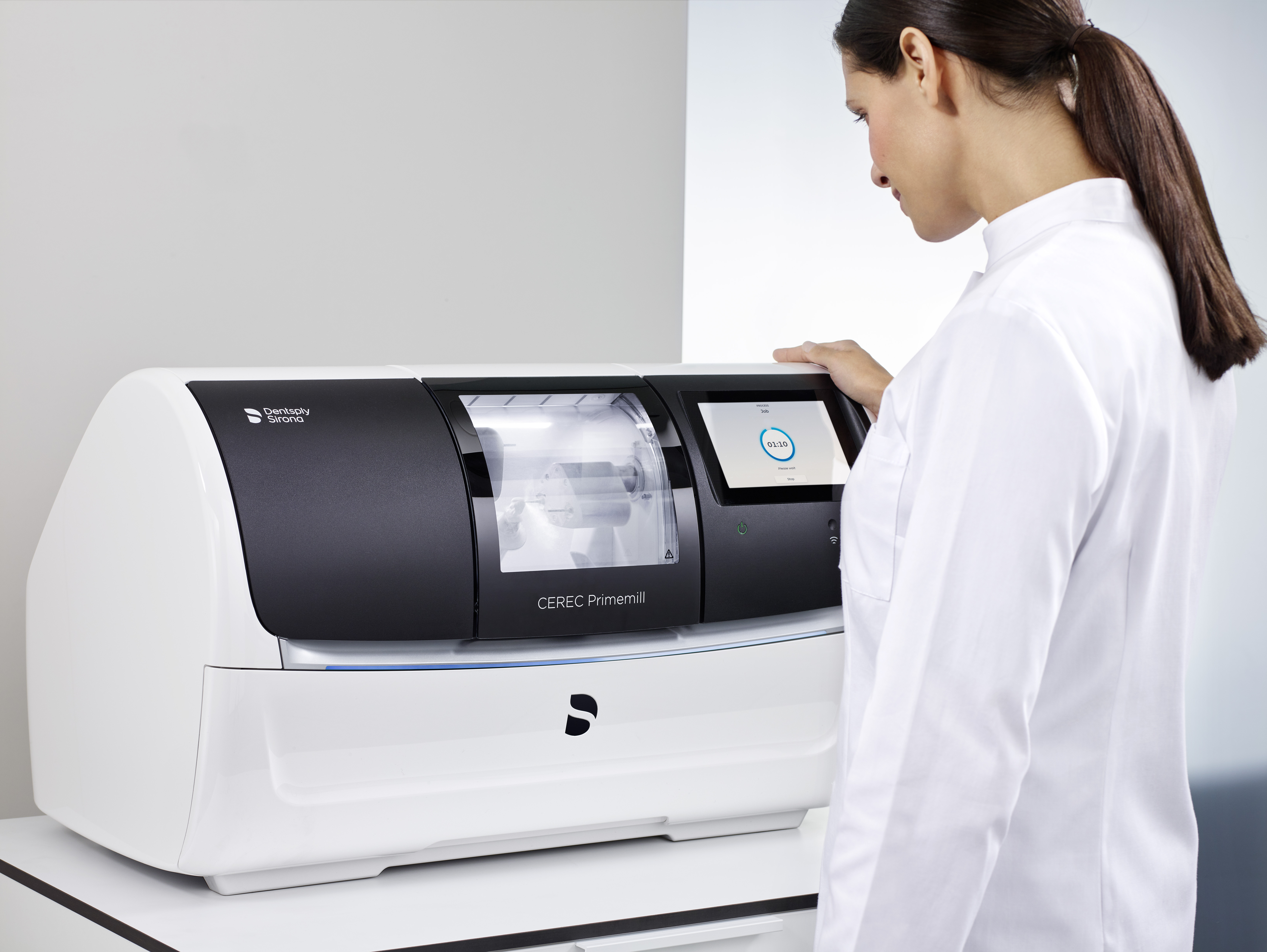Give us a call or provide your contact details below, and a Dentsply Sirona representative will be in touch soon.
Do you remember the exact root canal irrigation protocol you learnt? Has it changed? Are you still following it to the letter? A recent survey found the median irrigation time is 2.5 minutes1, while a passive bleach soak can take up to 40 minutes to effectively eliminate bacteria2! For a successful root canal, you of course need proper shaping, cleaning, and obturation, but are you doing all you can during that critical step in root canal disinfection? What about active irrigation?
What is active irrigation?
In Endodontics, proper root canal irrigation is mandatory to facilitate instrumentation through lubricating, to remove debris and the smear layer, to prevent apical debris packing impeding complete instrumentation and to disinfect
Active irrigation in Endodontics can be defined as using “…method to agitate and improve the flow of irrigants to the intricacies of the root canal system by mechanical or other energy forms”.3
Why should you switch to active irrigation?
If you’re using the conventional method of irrigation, you are depending solely on the positive pressure of injection and the viscosity of the irrigant to flow into the full canal system during root canal cleaning. This means there are areas in the root canal system that hasn’t been disinfected, increasing your chance of failed endodontic therapy.
Your solution to this challenge? Activate your irrigant. Active irrigation is needed to improve the effect of your irrigation protocol whatever the solution used - especially in those isthmuses, lateral and accessory canals of the root canal system that are not accessible to instrumentation.

A systematic review comparing activated irrigation and conventional non-activated irrigation concluded that “the use of mechanical active irrigation devices is beneficial in root canal treatment because mechanical active irrigation devices are clinically efficient in delivering the irrigant up to the working length without causing post-operative pain and ensuring canal and isthmus cleanliness”4. You can check the full review here.
Activation depends on introducing energy inside the irrigant, regardless of the method, increasing the mechanical cleaning effect of the irrigation. This helps you to clean more and penetrate the hidden spaces inside the root canal system.
In fact, according to a randomised controlled trial, it is safe to use irrigant activation, especially EndoActivator, for agitating the irrigant solutions in the clinical conditions and the use of the EndoActivator device can result in significant reduction of postoperative pain levels in comparison to the conventional endodontic needle.5
Thus, whether or not the root canal irrigation protocol you learnt included active irrigation, it’s clear through current research that it is effective. It promotes the flow of fresh solution into the untouched areas which then allows the irrigant to interact with the walls as well as reach the apex. The resulting benefits include6:
- Removal of the pulp tissues, tissue residues as well as microorganisms, fungi, and viruses
- Dissolving and removal of smear layer
- Destruction of biofilm
- Antibacterial effect and neutralisation of bacterial toxins
- Removal of intra-canal deposits (e.g. calcium hydroxide) as well as of sealer and remnants of gutta-percha
How do you activate the irrigant inside the root canal system?
So, what are your options for active irrigation?
1) Mechanical activation
The simplest way of activation is to move the gutta percha master cone up and down in a fast motion inside the root canal; however this method is considered inferior to the other activation methods.7
Some rotary root canal instruments have been introduced that are bent like a spoon and rotate to move the irrigant inside the canal. However, velocity and depth of penetration of these instruments may be affected significantly. Irrigants can only go as deep as their irrigation tip gauge allows them to and it is “…also limited by a vapour lock effect which makes it difficult for the irrigant to reach the canal's apical portion.”8
2) Ultrasonic-activated irrigation methods
To overcome the drawbacks of the previous method, irrigation activation using ultrasonic power was introduced to the market. The energy in this method is transferred from an ultrasonic hand piece to a tapered metal tip to activate the irrigant in what is called passive ultrasonic irrigation.
However, in severely curved canals, the ultrasonic activation tip’s performance may be compromised since the contact of the tip with the curved canal wall is inevitable. The danger here is a reduction of the cleaning efficacy and uncontrolled dentin removal on the outside curve of the canal, with a high risk of straightening or otherwise damaging the original canal curvature. This mishap can result in inadequately cleaned canals, thinner canal walls with ledge formation and possible perforations.9
3) Laser-activated irrigation methods
Fibre optic light tips can be used to introduce laser light into the liquid-filled root canal. There are many factors that influence the effect of laser activation methods; the energy density, the respective laser system, and the absorption of the hard and soft tissues that are being exposed.10
Noted drawbacks of the laser-activated irrigation method are that it can be time consuming and the tool itself can be cost prohibitive, especially given its narrow scope of purpose. Additionally, training and certification requirements can be cumbersome to maintain, such as ALD certification. There are also the extra precautionary measures needed to mitigate risks such as11:
- Potential injury to the eye
- Damage to the tissues
- Particulate matter from and infectivity of the laser plume
4) Negative Pressure Irrigation Systems
Negative pressure irrigation is an alternative method for the delivery of irrigants inside the root canal that was proposed in order to minimise the risk of irrigant extrusion through the apical foramen. Irrigants are delivered by a syringe and needle inside the pulp chamber and a fine suction tip placed near working length creates the necessary negative pressure that drives the irrigant into the canal.12
There are some drawbacks of these systems; Current NPI systems are limited to a uni-cannular effect, meaning that only a single canal at a time can be actively cleaned with NPI. Also, the ports frequently clog as dental pulp fragments and cut dentin debris are sucked into the ports during use.
5) Sonic-activated irrigation methods
To counter the drawbacks of these previous methods, sonic-activated irrigation should be of top consideration. Using sonic-activated tips inserted in a special hand piece, the solution can be activated with a frequency in the upper audible sound range (16–20 kHz). Dentsply Sirona’s new SmartLite Pro EndoActivator is an excellent representative of this group.
Why Dentsply Sirona’s SmartLite Pro EndoActivator is the best choice for you
The Smart Lite Pro EndoActivator is designed to safely energise the hydrodynamic activation phenomenon, and the technology developed with the introduction of the EndoActivator has been featured in more than 16013 scientific, peer-reviewed publications. This is certainly a more affordable option than laser-activated, and its cleaning efficacy and safety of the technology has been demonstrated in these numerous peer-reviewed papers.
The special hydrodynamic activation feature allows for better penetration, circulation, and exchange of an irrigant into both the instrumentable and uninstrumentable regions of the root canal. This results in 3D disinfection. 14
The SmartLite Pro EndoActivator provides two speeds in the sonic frequency range (18k cycles per minute (cpm) and 3k cpm) working in an elliptical motion. It also features a 360˚ rotatable attachment for improved clinical access and ambidextrous handling. The tips have a new parallelogram-shaped cross-section and are available in three sizes: small (yellow, 15/02, 22 mm in length) medium (red, 25/04, 22 mm in length), and medium long (red, 25/04, 28 mm in length). It is also cordless, lightweight, and well-balanced.
In clinical testing of the SmartLite Pro EndoActivator on more than 550 patients, dentists noted key gains in areas such as more potent agitation and ergonomics. Additionally, the vast majority were convinced that root canals could be sufficiently cleaned to obturate.15
Unactivated dentin surface (left) vs after irrigation (right). Activating irrigants can help produce a surface with more opened dentinal tubules, allowing for better obturation of lateral and accessory canals.16
And you don’t need cumbersome, expensive equipment to get these results. It is a simple tool that is easy to use. The basic steps of Smart Lite Pro EndoActivator protocol are:
- Prepare canal to produce a fully tapered shape.
- Select the activator tip that manually fits loosely within 2 mm of working length
- Fill pulp chamber with NaOCl, EDTA, or other irrigant solution
- Insert and turn on the SmartLite Pro EndoActivator
- Use a pumping action to move the activator tip in short 2-3 mm vertical strokes, agitating the intracanal solution for 30-60 seconds
- Repeat the above steps for each intracanal irrigant used
- DIG Insights; Based on GPs’ typical irrigation protocols that are performed after shaping/instrumentation but before obturation. n=201.
- Retamozo B, Shabahang S, Johnson N, Aprecio RM, Torabinejad M. Minimum contact time and concentration of sodium hypochlorite required to eliminate Enterococcus faecalis. J Endod. 2010 Mar;36 (3):520-3. doi: 10.1016/j.joen.2009.12.005. PMID: 20171375
- Susila, A., & Minu, J. (2019, November 25). Activated irrigation vs. conventional non-activated irrigation in Endodontics - A systematic review. European endodontic journal. Retrieved September 21, 2022, from https://www.ncbi.nlm.nih.gov/pmc/articles/PMC7006592/
- Susila, A., & Minu, J. (2019, November 25). Activated irrigation vs. conventional non-activated irrigation in Endodontics - A systematic review. European endodontic journal. Retrieved September 21, 2022, from https://www.ncbi.nlm.nih.gov/pmc/articles/PMC7006592/
- MJ;, R. S. N. M. S. D. (n.d.). Comparative evaluation of postoperative pain after using endodontic needle and endoactivator during root canal irrigation: A randomised controlled trial. Australian endodontic journal : the journal of the Australian Society of Endodontology Inc. Retrieved February 28, 2023, from https://pubmed.ncbi.nlm.nih.gov/25195661/
- Weiger, R. (n.d.). Root Canal irrigation: How much activation is necessary? - online dzz. 02. Retrieved October 1, 2022, from https://www.online-dzz.com/archive/issue/article/dzzint-2-2021/5660-103238-dzz-int20210008-root-canal-irrigation-how-much-activation-is-necessary/
- Weiger, R. (2021). Root Canal irrigation: How much activation is necessary? - online dzz. Dzz International. Retrieved September 21, 2022, from https://www.online-dzz.com/archive/issue/article/dzzint-2-2021/5660-103238-dzz-int20210008-root-canal-irrigation-how-much-activation-is-necessary/
- Ali, A., Bhosale, A., Pawar, S., Kakti, A., Bichpuriya, A., & Agwan, M. A. (2022, May 8). Current trends in Root Canal irrigation. Cureus. Retrieved September 21, 2022, from https://www.cureus.com/articles/95881-current-trends-in-root-canal-irrigation
- Rodrigues, C. T., EzEldeen, M., Jacobs, R., Lambrechts, P., Alcalde, M. P., & Hungaro Duarte, M. A. (2021). Cleaning efficacy and uncontrolled removal of dentin of two methods of irrigant activation in curved canals connected by an isthmus. Australian Endodontic Journal, 47(3), 631–638. https://doi.org/10.1111/aej.12534
- de Groot SD, Verhaagen B, Versluis M, Wu MK, Wesselink PR, van der Sluis LW. Laser-activated irrigation within root canals: cleaning efficacy and flow visualisation. Int Endod J. 2009 Dec;42(12):1077-83. doi: 10.1111/j.1365-2591.2009.01634.x. PMID: 19912378, from https://pubmed.ncbi.nlm.nih.gov/19912378/
- Boddun, M., & Sharva, V. (n.d.). Take a look at the recent articles. Laser hazards and safety in dental practice: A Review. Retrieved September 23, 2022, from https://www.oatext.com/laser-hazards-and-safety-in-dental-practice-a-review.php#jumpmenu4
- Konstantinidi, E., Psimma, Z., Chávez de Paz, L. E., & Boutsioukis, C. (2017). Apical negative pressure irrigation versus syringe irrigation: A systematic review of cleaning and disinfection of the root canal system. International Endodontic Journal, 50(11), 1034–1054. https://doi.org/10.1111/iej.12725
- U.S. National Library of Medicine. (n.d.). Advanced search results - pubmed. National Centre for Biotechnology Information. Retrieved February 24, 2023, from https://pubmed.ncbi.nlm.nih.gov/advanced/
- Ruddle , C. (2022, May). By dr. Clifford J. Ruddle - static.theruddleshow.com. The Ruddle Show. Retrieved February 24, 2023, from https://static.theruddleshow.com/pdflibrary/u1653417542/311/EADisinfection_May2022.pdf
- 2022 test of 85 US endodontists and GPs- Data on file
- Kanter V, Weldon E, Nair U, aet al. A quantitative and qualitative analysis of ultrasonic versus sonic endodontic systems on canal cleanliness and obturation. Oral Surg Oral Moed Oral Pathol Oral Radiol Endod. 2011;112(6):809-813. doi:10.1016/j.tripleo. 2011.06.002














